Jun
10
2011
Overall I am very happy with the results of the mod. At 2600 the stbd cylinders are #2 (303f) and #4 (394f). I can easily ballance those two.
The port cylinders are still high. #1 (385f) and #3 (403f). I gained over 200 rpm before the temps went over 400f. I think the inlet duct on the port side is still a problem, so the next step is to clean it up to smooth the air internally.
Jun
07
2011
Today the cowl was given a new oil door since the original one was glassed over and the forward lip flanges were added to the cowl.
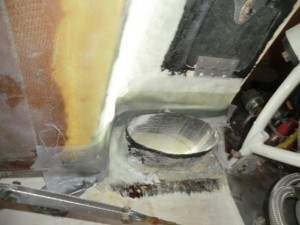
I really the new ducts. The airflow is very direct and open to the cylinders. With blast air directly on #3 (my current hottest cylinder) I should see much better cooling.
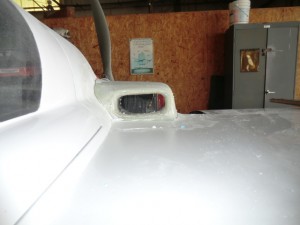
Tomorrow, a few nutplates to install, put the baffling back on and the bird should be ready for testing. The cowl mod was started on Saturday and completed on Wed. The work went very quicky.
Jun
05
2011
Yesterday was extremely busy and super hot out. Today’s work is much easier since the only goal is to glass the cowl.
The back section of the cowl was dam-ed and pour foamed.
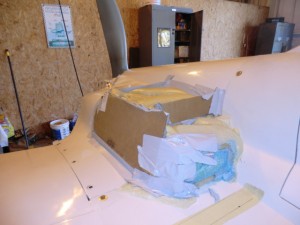

Carving is the fun part. You can get as creative as you want before you lock the shape out in fiberglass.
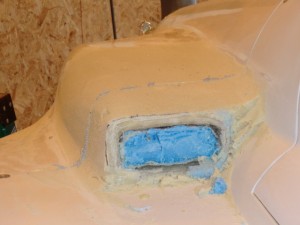
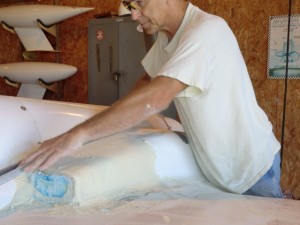
Some duct tape as a release and it is ready to be glassed.
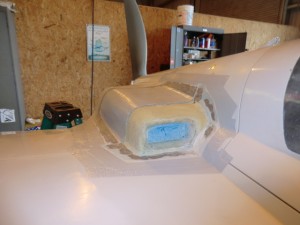
The new shape is beginning to grow on me. The cowl is much more aerodynamic now. Let’s let the glass cure before the next step of cowl mods.
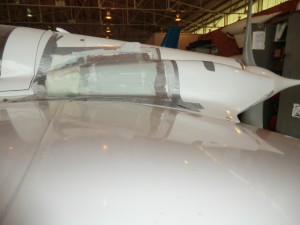
Jun
04
2011
I went flying yesterday and while the cylinder temperatures did come down about 15-20f I am still not able to achieve full power. The decision was made to cut the inlets off and install a set of inlets I had made about a year ago but never installed. This is the original opening size. I had removed the shoulder from the cowl and fashioned it into an inlet duct of approximately 7.5 sq inches.
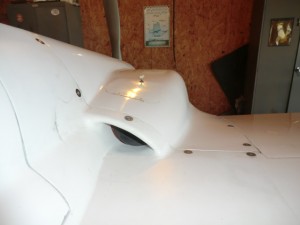
Stbd side.
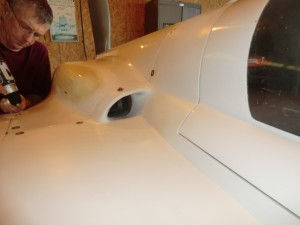
Tony is holding the new duct into postion after removing the old inlet system.
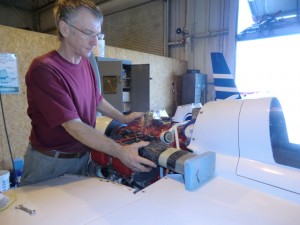
The shape of the new duct is rectangular in opening and MUCH straighter into to the plenum box. the inlet was fashioned using hot wire cut wing foam. The inlet area of these new ducts is slightly bigger than my plane at about 11.5-12 in sq.
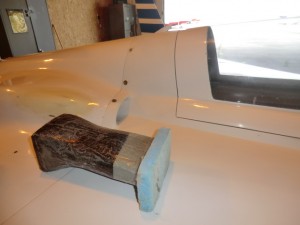
Working the port side was a bit more difficult as I needed to save part of the duct which
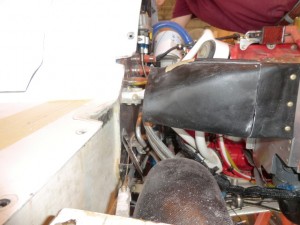
the new nose has been fitted to the duct.
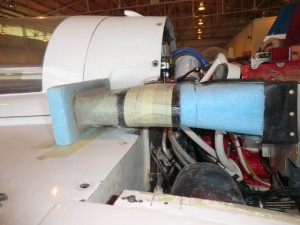
The cowl is cutaway and fitted for the new nose.
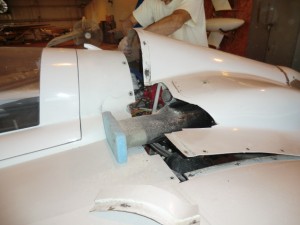
the nose section was dam-ed and pour foam was used to fix it in place.
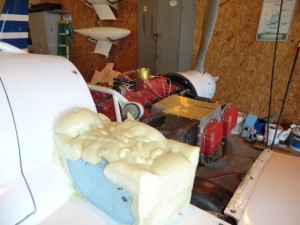
Jun
02
2011
The overheating of the engine is driving me crazy. The plane flies wonderfully well, it is super fast but I cant push it yet because of the cylinder temps being too high.
As you saw in my last post, I installed some eductors in my quest to solve the problem.
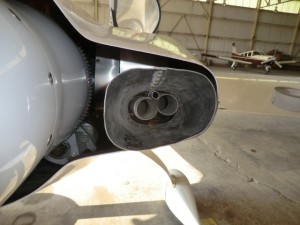
Nice shape and well built, but when I flew the plane, I only got about 15 f drop in cylinder temps at 2400 rpm but that is not near enough to allow full power operations and the cowl pressure did not significantly change (95 mph at 150 kts same as before installing eductors). After thinking about it I wondered why my plane which also has eductors cools wonderfully well….
After looking at my plane
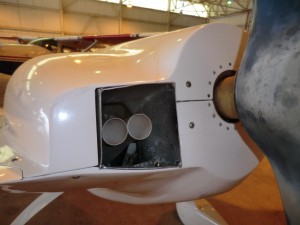 Port
Port
one can see my eductors are much bigger (both inlet and outlet) and the back of the cowl is compeletelyblocked off. At 130 kts TAS my cowl has a pressure of 55 mph differental from the cowl to the static port.
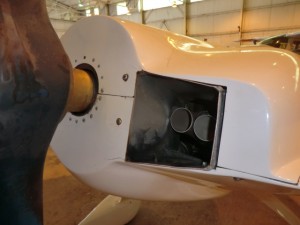 Starboard
Starboard
As a last resort, I decided I would try and modify the new plane to mimic my plane.
The first thing I did is enlarge the eductors.
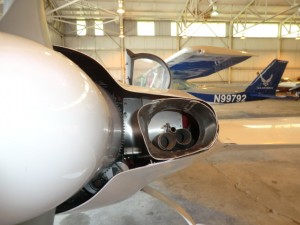
The next thing is to block off the entire outlet to ensure the air only had one way to escape…. through the eductors.
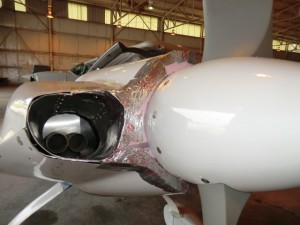 Port
Port
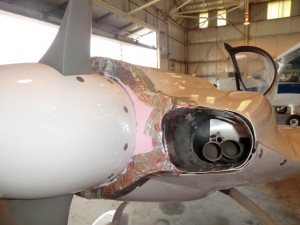 Starboard.
Starboard.
After the mods, I went out flying. The first thing I noted is while taxiing, I had a NEGITIVE pressure in the cowl on the ground, -10 mph and when I increased RPM, the cowl pressure actually decreased! The eductors really worked and the more exhaust (higher the RPM) the greater the negative pressure.
After take off the cowl pressure was 45 mph (it was around 80 mph). The strange thing is, the cylinder temps when up VERY quickly???? what’s up with this? Maybe it is because the engine was heat soaked waiting to take off, or the fact fact the OAT was at 95 F. I quickly decided to land to check thing out and on downwind, the temps had started to decrease. Tomorrow I’ll fly again when it is a bit cooler and I can do a more extensive testing…. I got to figure out what’s going on!!





















